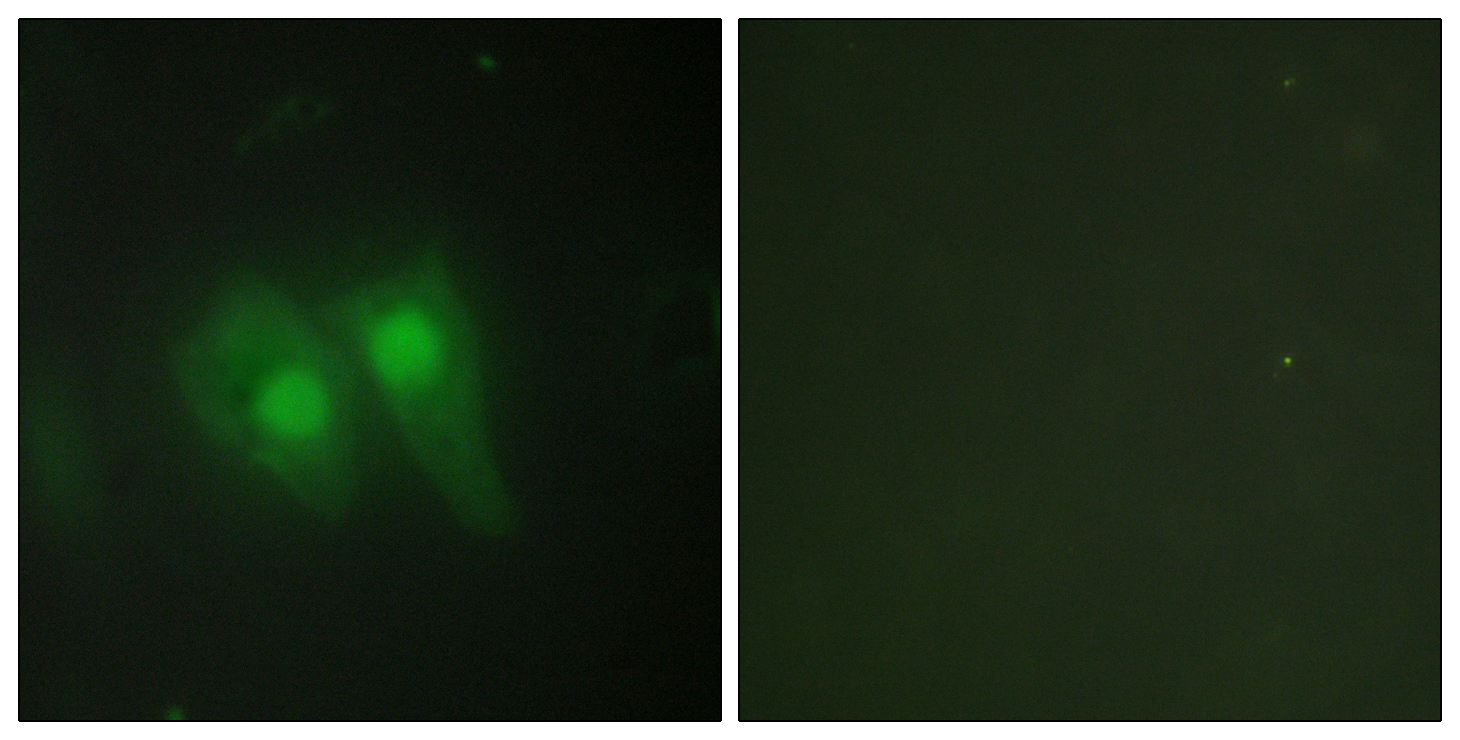pHyde Polyclonal Antibody
- Catalog No.:YT3707
- Applications:WB;IHC;IF;ELISA
- Reactivity:Human;Mouse;Rat
- Target:
- pHyde
- Fields:
- >>p53 signaling pathway;>>Ferroptosis
- Gene Name:
- STEAP3
- Protein Name:
- Metalloreductase STEAP3
- Human Gene Id:
- 55240
- Human Swiss Prot No:
- Q658P3
- Mouse Gene Id:
- 68428
- Mouse Swiss Prot No:
- Q8CI59
- Rat Gene Id:
- 170824
- Rat Swiss Prot No:
- Q5RKL5
- Immunogen:
- The antiserum was produced against synthesized peptide derived from human STEA3. AA range:421-470
- Specificity:
- pHyde Polyclonal Antibody detects endogenous levels of pHyde protein.
- Formulation:
- Liquid in PBS containing 50% glycerol, 0.5% BSA and 0.02% sodium azide.
- Source:
- Polyclonal, Rabbit,IgG
- Dilution:
- WB 1:500 - 1:2000. IHC 1:100 - 1:300. IF 1:200 - 1:1000. ELISA: 1:10000. Not yet tested in other applications.
- Purification:
- The antibody was affinity-purified from rabbit antiserum by affinity-chromatography using epitope-specific immunogen.
- Concentration:
- 1 mg/ml
- Storage Stability:
- -15°C to -25°C/1 year(Do not lower than -25°C)
- Other Name:
- STEAP3;TSAP6;Metalloreductase STEAP3;Dudulin-2;Six-transmembrane epithelial antigen of prostate 3;Tumor suppressor-activated pathway protein 6;hTSAP6;pHyde;hpHyde
- Observed Band(KD):
- 54kD
- Background:
- STEAP3 metalloreductase(STEAP3) Homo sapiens This gene encodes a multipass membrane protein that functions as an iron transporter. The encoded protein can reduce both iron (Fe3+) and copper (Cu2+) cations. This protein may mediate downstream responses to p53, including promoting apoptosis. Deficiency in this gene can cause anemia. Alternative splicing results in multiple transcript variants. [provided by RefSeq, Aug 2015],
- Function:
- caution:Was initially thought to have tumor suppressor function in prostate cancer. However, it was shown that it is probably not the case (PubMed:12866033).,cofactor:FAD.,function:Endosomal ferrireductase required for efficient transferrin-dependent iron uptake in erythroid cells. Participates in erythroid iron homeostasis by reducing Fe(3+) to Fe(2+). Can also reduce of Cu(2+) to Cu(1+), suggesting that it participates in copper homeostasis. Uses NAD(+) as acceptor (By similarity). May play a role downstream of p53/TP53 to interface apoptosis and cell cycle progression. Indirectly involved in exosome secretion by facilitating the secretion of proteins such as TCTP.,induction:By p53/TP53.,similarity:Belongs to the STEAP family.,similarity:Contains 1 ferric oxidoreductase domain.,subcellular location:Localizes to vesicular-like structures at the plasma membrane and around the nucleus.,su
- Subcellular Location:
- Endosome membrane ; Multi-pass membrane protein . Localizes to vesicular-like structures at the plasma membrane and around the nucleus.
- Expression:
- Expressed in adult bone marrow, placenta, liver, skeletal muscle and pancreas. Down-regulated in hepatocellular carcinoma.
- June 19-2018
- WESTERN IMMUNOBLOTTING PROTOCOL
- June 19-2018
- IMMUNOHISTOCHEMISTRY-PARAFFIN PROTOCOL
- June 19-2018
- IMMUNOFLUORESCENCE PROTOCOL
- September 08-2020
- FLOW-CYTOMEYRT-PROTOCOL
- May 20-2022
- Cell-Based ELISA│解您多样本WB检测之困扰
- July 13-2018
- CELL-BASED-ELISA-PROTOCOL-FOR-ACETYL-PROTEIN
- July 13-2018
- CELL-BASED-ELISA-PROTOCOL-FOR-PHOSPHO-PROTEIN
- July 13-2018
- Antibody-FAQs
- Products Images

- Western Blot analysis of various cells using pHyde Polyclonal Antibody

- Immunofluorescence analysis of HeLa cells, using STEA3 Antibody. The picture on the right is blocked with the synthesized peptide.

- Western blot analysis of lysates from COLO205 cells, using STEA3 Antibody. The lane on the right is blocked with the synthesized peptide.

- Immunohistochemical analysis of paraffin-embedded human Colon cancer. 1, Antibody was diluted at 1:200(4° overnight). 2, Tris-EDTA,pH9.0 was used for antigen retrieval. 3,Secondary antibody was diluted at 1:200(room temperature, 45min).


